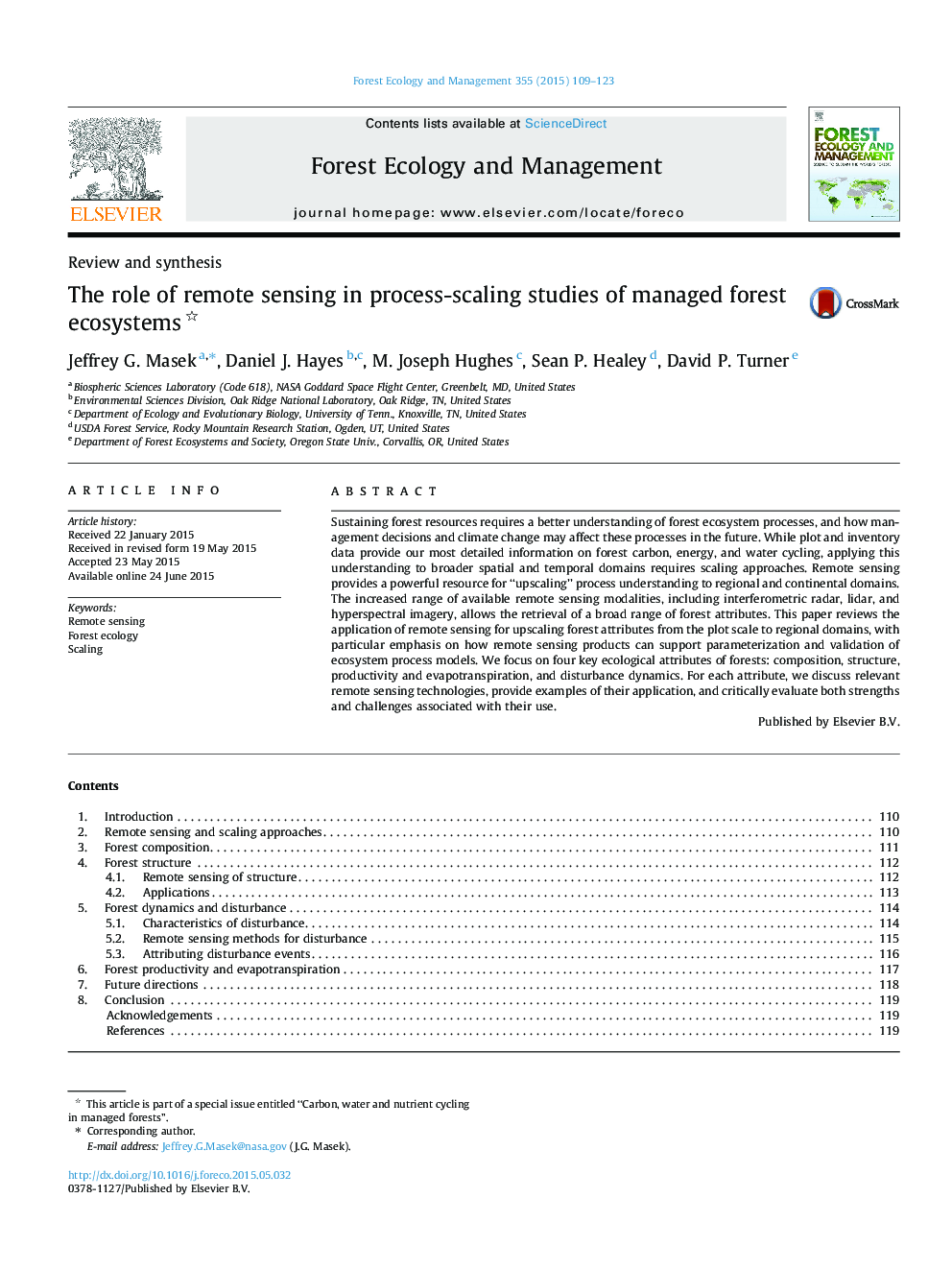| Article ID | Journal | Published Year | Pages | File Type |
|---|---|---|---|---|
| 86103 | Forest Ecology and Management | 2015 | 15 Pages |
•Remote sensing is a key resource for up-scaling forest measurements.•New approaches are described for composition, structure, and other parameters.•Next-generation models will integrate new remote sensing datasets.•Future approaches will seamlessly merge satellite, airborne, and in-situ sensor webs.
Sustaining forest resources requires a better understanding of forest ecosystem processes, and how management decisions and climate change may affect these processes in the future. While plot and inventory data provide our most detailed information on forest carbon, energy, and water cycling, applying this understanding to broader spatial and temporal domains requires scaling approaches. Remote sensing provides a powerful resource for “upscaling” process understanding to regional and continental domains. The increased range of available remote sensing modalities, including interferometric radar, lidar, and hyperspectral imagery, allows the retrieval of a broad range of forest attributes. This paper reviews the application of remote sensing for upscaling forest attributes from the plot scale to regional domains, with particular emphasis on how remote sensing products can support parameterization and validation of ecosystem process models. We focus on four key ecological attributes of forests: composition, structure, productivity and evapotranspiration, and disturbance dynamics. For each attribute, we discuss relevant remote sensing technologies, provide examples of their application, and critically evaluate both strengths and challenges associated with their use.
